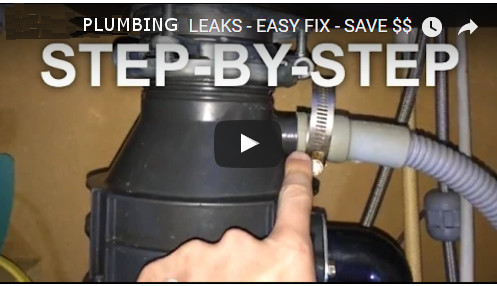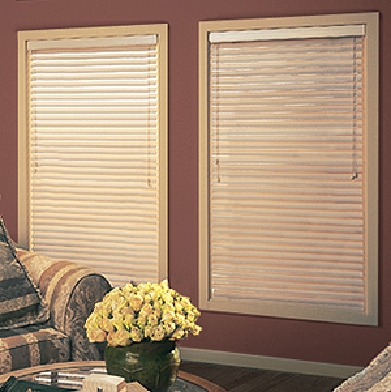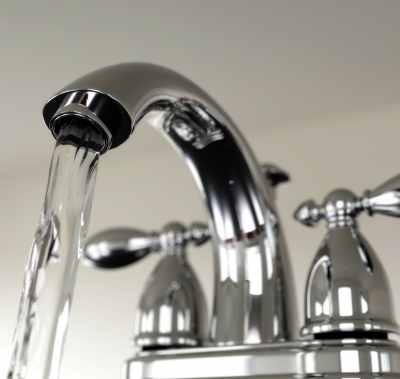Being a first-time homeowner can be both exciting and overwhelming. You can take pride in knowing that each payment that you make towards your home loan is helping you build equity in your home. While building equity is something to be proud of, now that you are the homeowner, gone are the days where you can call your landlord if something goes wrong with the plumbing. It’s now your responsibility to pay for the repairs that you need whenever something breaks down. A good way to save on the cost of the repairs is to learn to do it yourself. If you’re starting to notice that something isn’t right with your plumbing, here are some tips for DIY Plumbing Repairs:
Fixing a Dripping Garbage Disposal
Your garbage disposal can act up from time to time. You need to know how to reset it under the sink when the motor is tripped, but it’s also nice to know how to do minor repairs when your disposal is leaking under the sink. Even a slow leak could lead to damaged items in the storage area, a smelly kitchen, and moldy cabinets.
Fixing your leaky disposal only requires basic do-it-yourselfer skills. You must locate the source of the leak first. If the top of the unit is wet, you have a main seal leak. If the drain pipe is wet, that is a gasket leak. Drips coming from the hose may indicate a faulty hose or clamp. Make sure to the breaker of the disposal is off, uninstall the unit, replace the seal or hoses that are needed, and then reinstall and you should be all set.
How to Boost Your Water Pressure
If nothing more than a dribble of water is coming out of your faucets, you’ll need to troubleshoot why your water pressure is so low. You don’t necessarily need to call a professional right away if the problem requires only a minor fix. Once you identify which faucet or faucets have low pressure, you can start to troubleshoot.
The easiest fix would be if you have a low-flow or plugged faucet aerator. This is a mesh or threaded metal material that found on the end of your spout. Pull the mesh filter screen out and look for mineral deposits that would unclog the drip. Scrape the debris off of the filter and see if the flow changes. If this doesn’t fix anything, the issue could be partially open shut-off valves. Locate your shut-off and make sure it’s running parallel to the pipe.
Unclogging Stubborn Drains
If your kitchen sink drain is slow, there are a few ways that you can attempt to unclog the drain before your get the heavy artillery. First, pour boiling water down the drain, if the clog is grease based the boiling water could melt it enough to unclog it…
Note to self… you shouldn’t be pouring grease down your drain in the first place… then you won’t be having this problem.
Next you can try, pouring vinegar and baking soda to eat away at the clog. Let it sit for 10 minutes to see if this worked and flush with water.
If your shower drain is clogged, you could find yourself standing ankle deep in dirty water. In the bathroom tub or shower, the clog is likely to be a mixture of hair and soap. To fix this you simply remove the stopper or drain cover (some of them unthread while others have a screw or two holding them on). Then, you can fish a drain unclogging tool (such as a piece of wire or even a bent coat hanger) into the drain to grab hair and other debris. When you have all the hair cleared out, your water should be running free again. Once again hot water will help melt the soap and finish flushing out your drain.
If just removing the clog in the trap doesn’t solve your issue the clog could be further down the line where your coat hanger can’t reach it. In that case, you may need to call in a professional. Magnolia Plumbing recommends using a plumber that offers Hydro-jetting rather than harsh chemicals. Hydro-jetting, is a process that involves inserting a special water hose into the drain. A sprayer head is attached to the end of the hose, with a 360 degree field of effect. The hose sprays out a very high pressure stream of water that covers the entire inside of the pipe. In this way, the hydro jet can remove any and all waste that may be stuck to the pipe walls.
Water Heater Issues
Water heater problems are a bit more complex and may be a bit more difficult for the beginning DIY-er. If you have a leak in the pipes leading to the water heater that is one thing but, generally there is nothing you can do to repair a leaky water heater itself. They must be replaced before the leak gets too bad or you will end up having a major flood. Fortunately, there are new types of connecting pipes that make even replacing the water heater itself not as bad as it used to be. The major issue with replacing an electric water heater is that they are relatively heavy so you might need some help lifting it. You need to be sure to drain as much water out as possible to reduce the weight of the old water heater (use a hose attached to the valve on the bottom). You also have to make some basic electrical connections. If you don’t feel comfortable with that you may need to call in a professional.
(Warning: NEVER turn on the electricity to an empty water heater you will burn out the elements in about 2 seconds and then you will need to replace them).
Speaking of new elements, if your old water heater isn’t leaking but isn’t heating as quickly as it used to, it might simply need a new element rather than replacing the whole thing. Usually this requires turning off the circuit breaker, draining the tank, unscrewing the element and screwing in a new one. Refilling the tank and then turning on the power again (in that order!!!).
Labor can cost a pretty penny when you’re having problems with any systems in the home. As you can see, YouTube is a great source for videos to show you how easy it is to do it yourself, which can save you a bundle.
You might also like:
- Saving on Home Renovations
- Avoid the “Money Pit” Syndrome
- Landscaping the Perfect Yard on a Budget
- Pricing Your Remodel: How to Stay Within a Budget
- Frugal Finances: 5 Ways to Save Money on Home Bills
- How to Create the Ideal Home Office You’ll Enjoy Working In
- Why Adding A Mother-In-Law Apartment Could Be a Good Investment Bet



